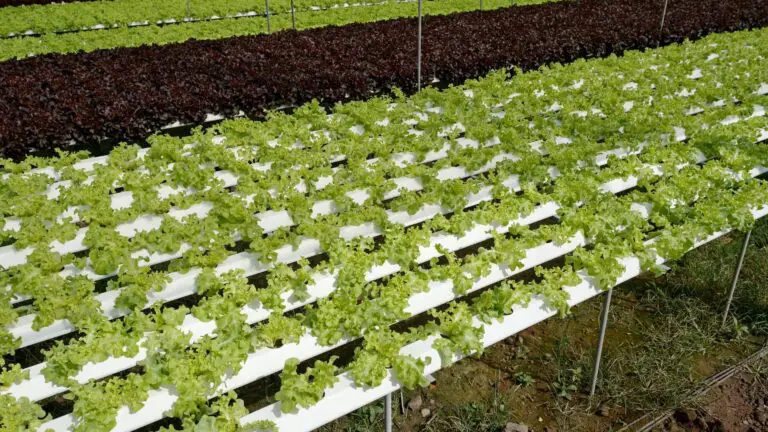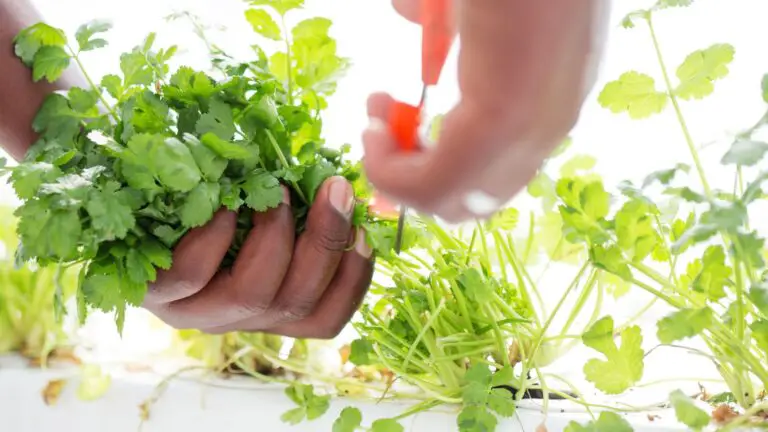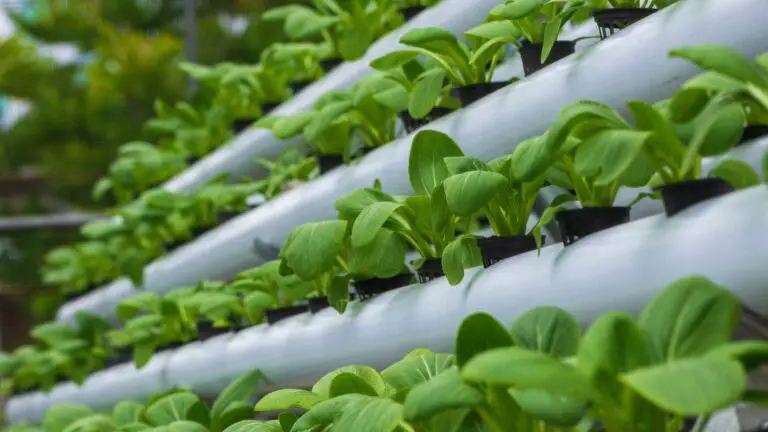Water Quality in Hydroponic Systems: How to Ensure Your Plants Thrive
Disclosure: Your purchases through our links may earn us a small commission, supporting our site’s ability to provide valuable information to our readers. Rest assured, it won’t impact your price. Thank you for your support.
The growing popularity of hydroponic gardening can be attributed to its many advantages over traditional soil-based gardening. Nowadays, many gardeners are starting to embrace the convenience and environmentally sustainable benefits of growing plants without soil. But for those new to hydroponics, one of the biggest obstacles is learning how best to maintain water quality for their plants.
This article will provide an overview of keeping your hydroponic system healthy by focusing on the essential elements that must be monitored and managed. By following these guidelines, you’ll be able to ensure that your plants get all the nutrients they need while providing a safe and thriving environment free from contaminants.
Understanding Water Quality Parameters in Hydroponics
Understanding the basics is key when it comes to maintaining water quality in your hydroponic system. First, it’s essential to know what types of elements should continuously be monitored to achieve optimum growing conditions:
- Oxygen – Oxygen is necessary for healthy plant growth as it helps plants take in vital nutrients from the water. It’s crucial that oxygen levels remain optimal for healthy plant growth. When oxygen levels are too low, plant roots may become deprived of oxygen and eventually die off due to a lack of nutrient intake.
- pH – pH (potential hydrogen) measures how acidic or alkaline your water is on a scale from 0-14, with 0 being completely acidic and 14 being completely alkaline. Different plants require different pH levels in their water, so you must determine which type of plants you’re growing beforehand and regularly test for optimal ranges. In hydroponic systems, the ideal pH range is between 5.5 and 6.5. If the pH is too high or too low, it can affect nutrient availability and uptake, leading to plant stress and nutrient deficiencies.
- Nutrients – Nutrients are essential for healthy plant growth and the proper uptake of minerals and vitamins into a plant’s cells. Depending on what type of nutrient solution or fertilizer you use, make sure it contains nitrogen (N), phosphorus (P), potassium (K), calcium (Ca), magnesium (Mg), sulfur (S), iron (Fe) and other trace elements such as zinc (Zn), copper (Cu), boron (B). Read more on 13 nutrients required for hydroponic plants.
- Salinity – Salinity is important because high salinity can cause damage or even kill certain species if their required salinity range is exceeded. Check the labels on any fertilizers before adding them to your nutrient solutions, as some formulations have high salt content, which can increase salinity levels if applied too liberally or at too frequent intervals.
- EC: Electrical conductivity (EC) is the measure of the amount of dissolved salts in the water. In hydroponic systems, the ideal EC range depends on the stage of plant growth. Typically, the EC range for seedlings is lower than for mature plants. High EC levels can lead to nutrient toxicity, while low EC levels can cause nutrient deficiencies.
- TDS: Total dissolved solids (TDS) is the measure of the total amount of dissolved solids in water, including minerals, salts, and other substances. In hydroponic systems, the ideal TDS range is between 800 and 1500 ppm. If the TDS is too high or too low, it can affect nutrient availability and uptake, leading to plant stress and nutrient deficiencies.
- Water Temperature: The water temperature in hydroponic systems should be maintained between 65-75°F (18-24°C). High water temperatures can reduce dissolved oxygen levels, leading to root damage and nutrient deficiencies.
These water quality parameters are essential indicators of water quality in hydroponic systems.
Related:
What EC Means for Hydroponics
7 Watering Tips for New Hydroponic Gardeners
Maintaining Water Quality
Once you understand the basics behind maintaining water quality in hydroponics, there are a few other things you should do regularly for optimum performance:
- Regularly test water quality – Regular testing is essential for good results. Investing in a reliable testing kit to measure oxygen levels, pH, and nutrient concentrations will help ensure optimum performance from your hydroponic system.
- Use clean containers – Containers that contain residues from previous uses can harbor bacteria or fungus spores, which might find their way into your nutrient solution through airborne particles or via physical contact between container surfaces and lines connected directly to the solution itself. Using sterilized containers free from residue will help eliminate potential contamination sources inside your system.
- Filter water regularly – Filtering eliminates any small particles, such as dust or dirt, which could cause clogging issues if left unchecked over time. It would help if you also considered using a UV light filter, which will help kill harmful bacteria before they contaminate nutrients within your solution.
Here is our recommendation on the best UV light filter.
- Add beneficial organisms – Beneficial organisms such as nematodes or fungi naturally occur within soil-based gardens but need to be introduced manually into hydroponic systems. Adding beneficial organisms into your nutrient solution gives plants an extra boost by adding beneficial microorganisms back into the environment where natural occurrence would otherwise not be possible, allowing them access to more nutrients that would otherwise not be available due to low organic matter content present inside our systems themselves.
How to Test Water Quality in Hydroponic Systems
To ensure your hydroponic plants thrive, it’s crucial to test the water quality regularly. Different methods for testing water quality parameters include pH meters, EC/TDS meters, and digital thermometers. These tools allow you to monitor water quality parameters and adjust them accordingly.
We suggest using a testing kit that can measure all of your desired metrics with just one device. If you’re searching for a specific tool that meets your needs, look no further! We’ve compiled a list of the best options available so you can find exactly what suits your requirements.
Related:
Should You Use PH Test Strip or Digital PH Meter for Hydroponics
A Beginner’s Guide to Buying a Digital pH Meter for Hydroponics
How to Measure EC, pH, DO and Temperature in a Hydroponic System
Why Your pH Meter is Giving You Incorrect Readings and how to Troubleshoot them
Common Water Quality Issues and How to Fix Them
Several common water quality issues can occur in hydroponic systems. Here are a few examples and how to fix them:
- High pH: Add phosphoric or nitric acid to the water to lower the pH. You can also add citric acid or vinegar for a more natural solution.
- Low pH: Add potassium hydroxide or sodium hydroxide to the water to raise the pH. Baking soda or limestone can also be used for a more natural solution.
- High EC/TDS: To lower the EC/TDS, dilute the water with fresh, clean water. You can also replace the nutrient solution with a lower EC/TDS.
Related:
What Are the 10 Ways to Avoid Over or Underwatering Your Seedlings in Hydroponics?
7 Watering Tips for New Hydroponic Gardeners
Conclusion
By following the above tips, you’ll be well on your way toward ensuring that all requirements are met within our hydroponic systems allowing us to provide our plants with everything they need to thrive! With proper care and maintenance, we’ll be able to achieve great results when it comes time to harvest our crops!
Thank you for reading!
Also read:
How to Improve Your Yield Using the Kratky Method
How to Set Up DIY Deep Water Culture (DWC) Hydroponic System?
How to Set Up a Nutrient Film Technique (NFT) Hydroponic System?
How to Choose the Right Hydroponic Grow Light for Plants?





